The Oughterard Hatchery and the Fight to Protect Ireland's Waterways
CM
Excerpts from Kevin Prunty's book (2024), titled "Incubating the Trout: The Story Of The Oldest Salmonid Hatchery In The World and the Environmental Fight to Protect It."
Date: February 2024. Prepared by: Conor MacGiolla Bhuí, MSc
Executive Summary
This blog summarises key themes and facts from Kevin Prunty's book, "Incubating the Trout," which details the history of the Oughterard Hatchery, the world's oldest salmonid hatchery, and the ongoing environmental battle to protect the Owenriff River system and Lough Corrib from pollution and invasive species. The book highlights the hatchery's historical significance, the chronic issues of agricultural runoff, outdated sewage systems, and the impact of non-native pike on native salmonid populations and the critically endangered Freshwater Pearl Mussel. It underscores the consistent failure of Irish State Agencies to adequately implement national and EU environmental legislation, often requiring intervention from the European Union to prompt action.
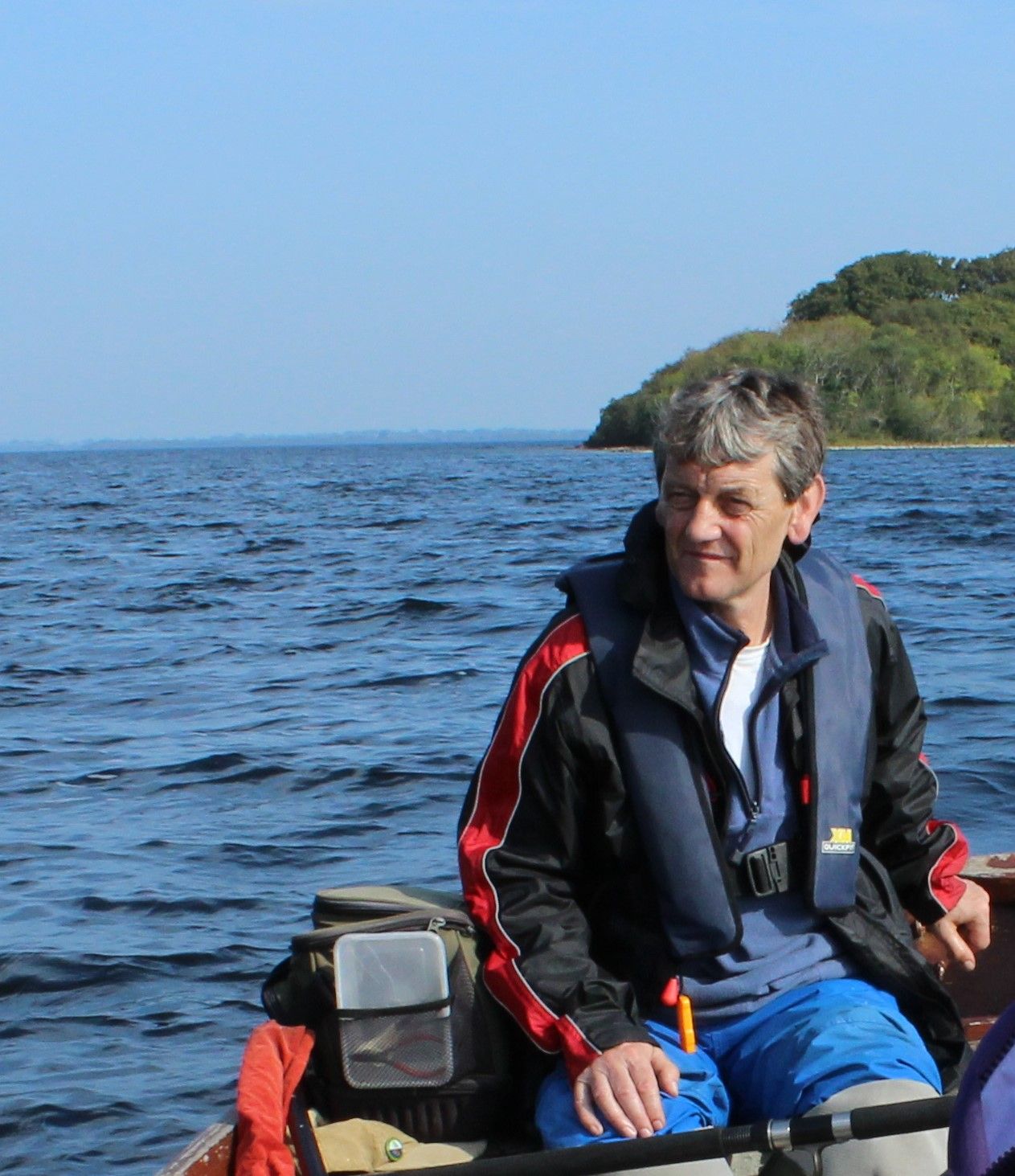
Main Themes and Key Ideas
1. The Oughterard Hatchery: A Legacy of Conservation and Education
Historical Significance: The Oughterard Hatchery, established in December 1852 by Edmund & Thomas Ashworth under the direction of Robert Ramsbottom, is "the start of the world’s first commercially operated salmon hatchery." It initially focused on salmon propagation and later transitioned to brown trout in 1908. Its methods, such as the 'wet method' of stripping fish and early sea cage rearing, garnered global attention and formed the basis for authoritative papers on hatchery management.
Volunteer-Driven Conservation: The hatchery has a long history of being managed and maintained by dedicated volunteers and angling clubs. From the Corrib Fisheries Association (1898) to the Galway & Corrib Anglers Association (1938) and the Lough Corrib Angling Federation, local anglers have consistently invested time, effort, and finances to ensure its operation. John Gibbons, a volunteer since 1985, is particularly lauded for his significant contributions, including overseeing a major reconstruction in 1992.
Essential Role as a "Monitoring Station and Backup Plan": Anglers view the hatchery not as a replacement for natural processes but as "a monitoring station and backup plan because of pressure from pollution and invasive species on the Owenriff system." It aims to replenish fish stocks under threat and serves as an "educational tool to involve young people in the protection of their environment."
Survival and Impact of Stocking: While genetic studies from UCD and QUB (2006, 2012, 2018) suggest "no impact, either positive or negative, on the overall Corrib trout population" from Oughterard fry stocking, the author contends that "areas that were stocked were very productive when it came to fishing." The significant annual release of approximately 250,000 unfed fry, even with a 5-10% survival rate, is seen as a crucial aid to trout stocks, with observations of salmonids returning to the Owenriff for spawning, potentially to where they originated.
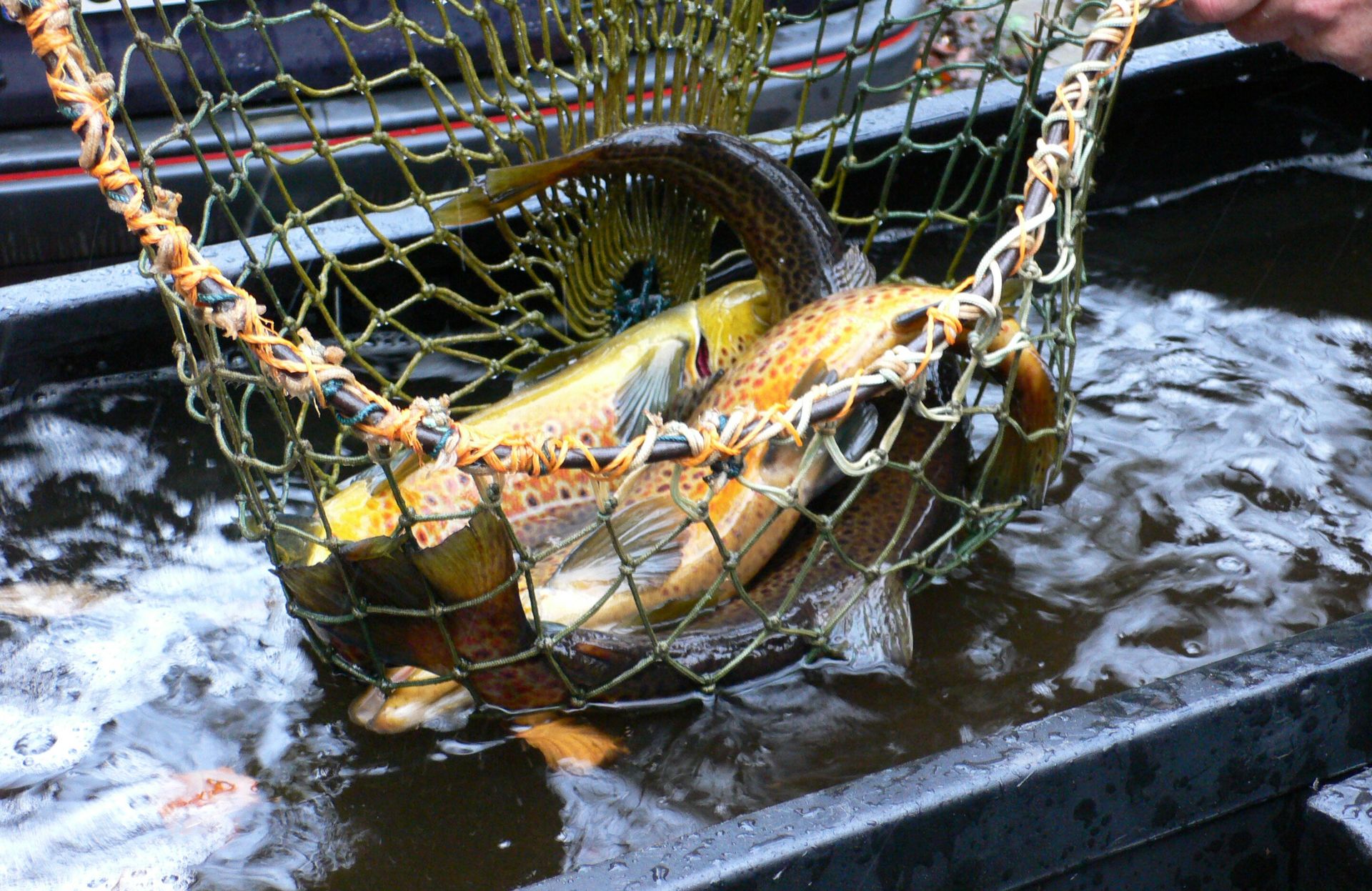
2. Widespread Pollution and Environmental Degradation of the Owenriff System and Lough Corrib
Multifaceted Sources of Pollution: The Owenriff River system, a vital spawning ground for salmon and trout and home to the endangered Freshwater Pearl Mussel, faces severe threats from:
Agricultural Runoff: "Massive amounts of fertiliser run-off draining from coniferous forestry" and "bad farming practices", including slurry spreading on peatlands, are identified as major contributors. Water sampling in 2021 showed phosphate readings "a minimum of 15 times" the legal limit for salmonid waters. Elevated ammoniacal nitrogen levels are also "catastrophic" and a likely cause of fish egg deaths. The EPA's 2021 report attributes "sixty-three percent of impacted water bodies stems from agriculture."
Outdated Sewage Systems: Oughterard's "outdated town sewage treatment plant", built in the 1940s, consistently discharged poorly treated wastewater into the Owenriff River, a Special Area of Conservation (SAC). Despite €7.0 million allocated in 2003 for a new plant, construction only began in 2016, "twelve years after the original start date." This contributed to issues like the cryptosporidium outbreak in Lough Corrib in 2007.
Coniferous Forestry: Extensive planting of non-indigenous coniferous trees on Connemara boglands, coupled with heavy rock phosphate fertilisation, has led to "huge problems from fertiliser run-off into spawning streams." Dr. Roderick O’Sullivan highlighted that these plantations produce acid particles, resulting in "a huge run-off of aluminium into the river’s spawning beds." A leaked memo in 2006 described Irish forestry as a "fertiliser timebomb".
Impact on Biodiversity:Arctic Char: Disappeared from Lough Corrib in the mid-1980s, blamed on increasing pollution.
Freshwater Pearl Mussel (Margaritifera margaritifera): Critically endangered, this species relies on salmonids for dispersal. Dr. Evelyn Moorkens' 2004 investigation found a "big decline in mussel under five years old due to fertiliser run-off from the forestry." Later water testing in 2023 continued to show dangerously high levels of pollutants, making a sustainable reproducing population impossible.
Salmonid Health: Pollution has led to a significant decline in ova production at the hatchery, from "close to 2,000 per hen fish in 1993" to "700 per fish in 2004," and a record "seventy-five percent" mortality rate for fry in 2021-22.
Anglers as Environmental Activists: The Lough Corrib Angling Federation and the Carra/Mask/Corrib Water Protection Group (C/M/C Water Prot. Gr.) have played a crucial role in documenting pollution, lobbying politicians, and taking cases to the EU. They have successfully stopped various damaging developments, including pier extensions and dog pounds.
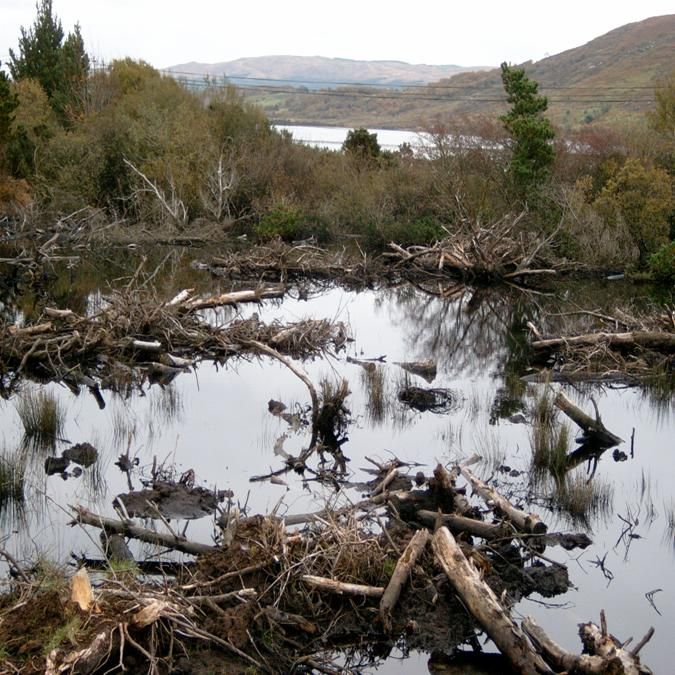
3. The Threat of Invasive Species: Pike Infestation
Non-Native Predator: Pike (Esox lucius) are "non-native northern pike" that pose a significant threat to native salmonids. They are highly fecund, outbreeding trout, and piscivorous, preferentially predating on salmon and trout. Studies show pike consume significantly more trout than other fish species, even when other prey is abundant.
Illegal Introduction and Range Expansion: The Owenriff system, historically pike-free due to the Canrawar waterfall barrier, saw the "illegal introduction of pike into these waters" around 2008, leading to "environmental vandalism." Surveys confirmed a decline in salmonid numbers and the eradication of salmonids in some lakes in the upper catchment.
State Agency Inaction and Conflicting Byelaws: Despite the Owenriff system being an SAC with protected species like Atlantic Salmon and Freshwater Pearl Mussel, State Agencies initially failed to implement a pike eradication plan.
Irish Byelaws 809 and 806 (2006), which protect "non-native species" like pike, are "directly in conflict with the management policy" of protecting native species and the EU Habitats and Water Framework Directives.
A Salmonid Bye-law (964) introduced in 2018 to protect seven trout loughs was annulled due to the lack of an Environmental Impact Assessment (EIA). The subsequent revelation that no EIAs exist for bye-laws 806 and 809 highlights a "second breach of EU and Irish environmental law."
The term "naturalised" began to be used by IFI to refer to coarse fish, an attempt to justify their protection, despite having no basis in EU directives.
EU Intervention Required: Similar to pollution issues, action on pike eradication was only prompted by a petition from the Lough Corrib Angling Federation to the EU Court of Justice in 2017. This led to the IFI developing an "Owenriff Fish Population Rehabilitation Plan 2018" to remove pike.
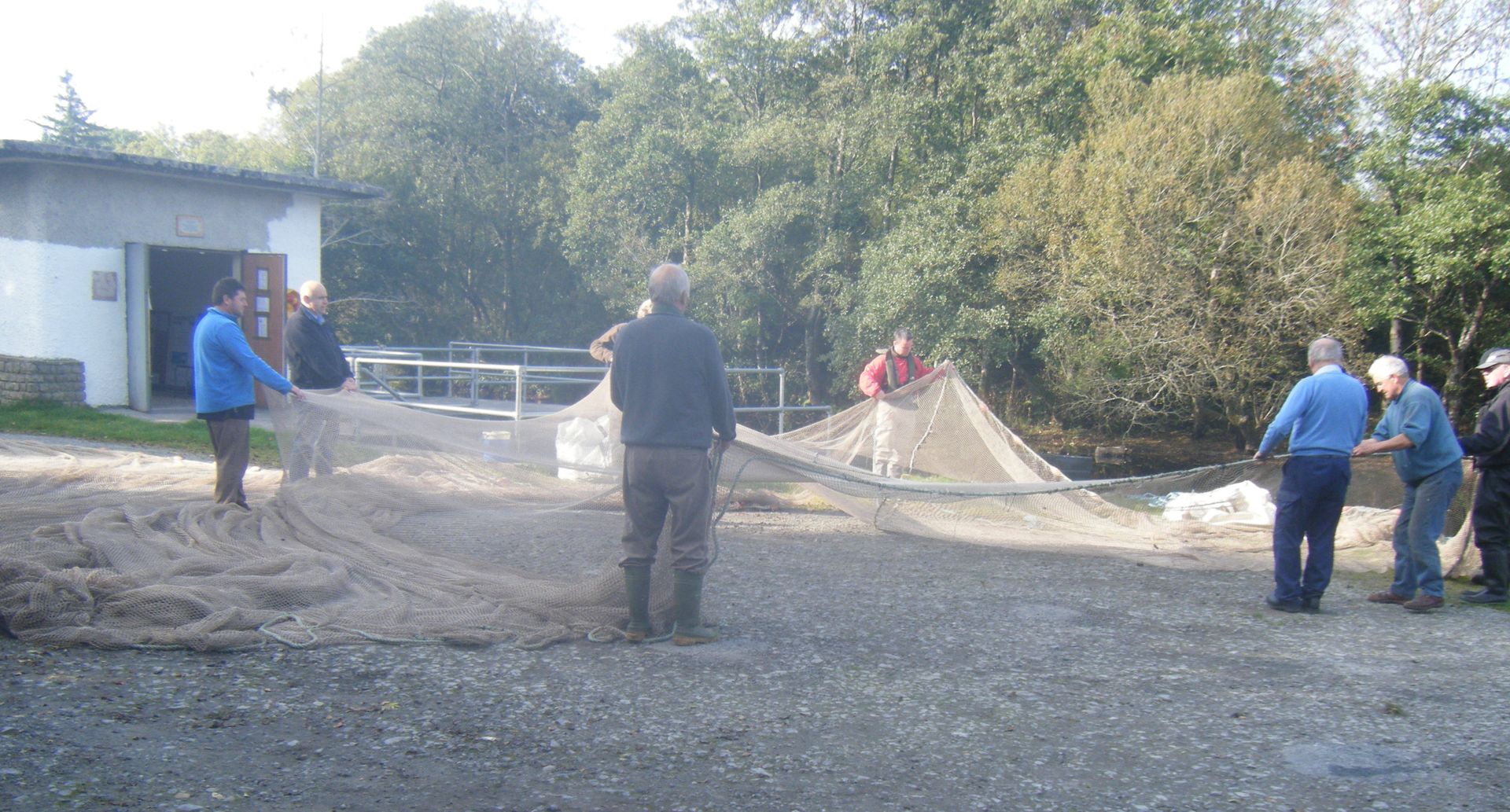
4. Systemic Failures in Environmental Governance
Lack of Implementation of EU Directives: Ireland has consistently failed to implement EU environmental laws, notably the Nitrates Directive (91/676/EEC) and the Habitats Directive, leading to numerous convictions and ongoing legal cases in the European Court of Justice. Michael D. Higgins TD, in 2005, stated, “The Nitrates Directive needs to be implemented. People were not for real if they weren’t going to publicly demonstrate to stop bad farming practices, outdated sewage systems, and forestry from destroying our lakes and rivers.”
Underfunding and Bureaucratic Inertia: Despite significant funding allocated to State Agencies (IFI, NPWS, LAWPRO, Irish Water, EPA), environmental problems persist. There are instances of inadequate budgets for enforcement, delayed projects, and a perceived lack of urgency from senior management in addressing critical issues.
Conflicting Policies: The protection afforded to non-native coarse fish through national byelaws directly contradicts the EU Habitats Directive's mandate to protect native species and their habitats, demonstrating a fundamental inconsistency in Irish environmental policy.
Impact on Drinking Water: The broader consequences of water pollution extend to public health, as evidenced by the cryptosporidium outbreak and the EU Court of Justice ruling in January 2024 that Irish drinking water exceeds EU safety levels for trihalomethanes (THMs). The author posits, "Would it not be better to stop the pollution at source?"
Need for Co-ordinated Action: The repeated need for EU intervention highlights a systemic failure within Ireland to proactively protect its environment. Effective implementation of existing laws, greater enforcement, and a cohesive strategy across all relevant State Agencies are crucial.
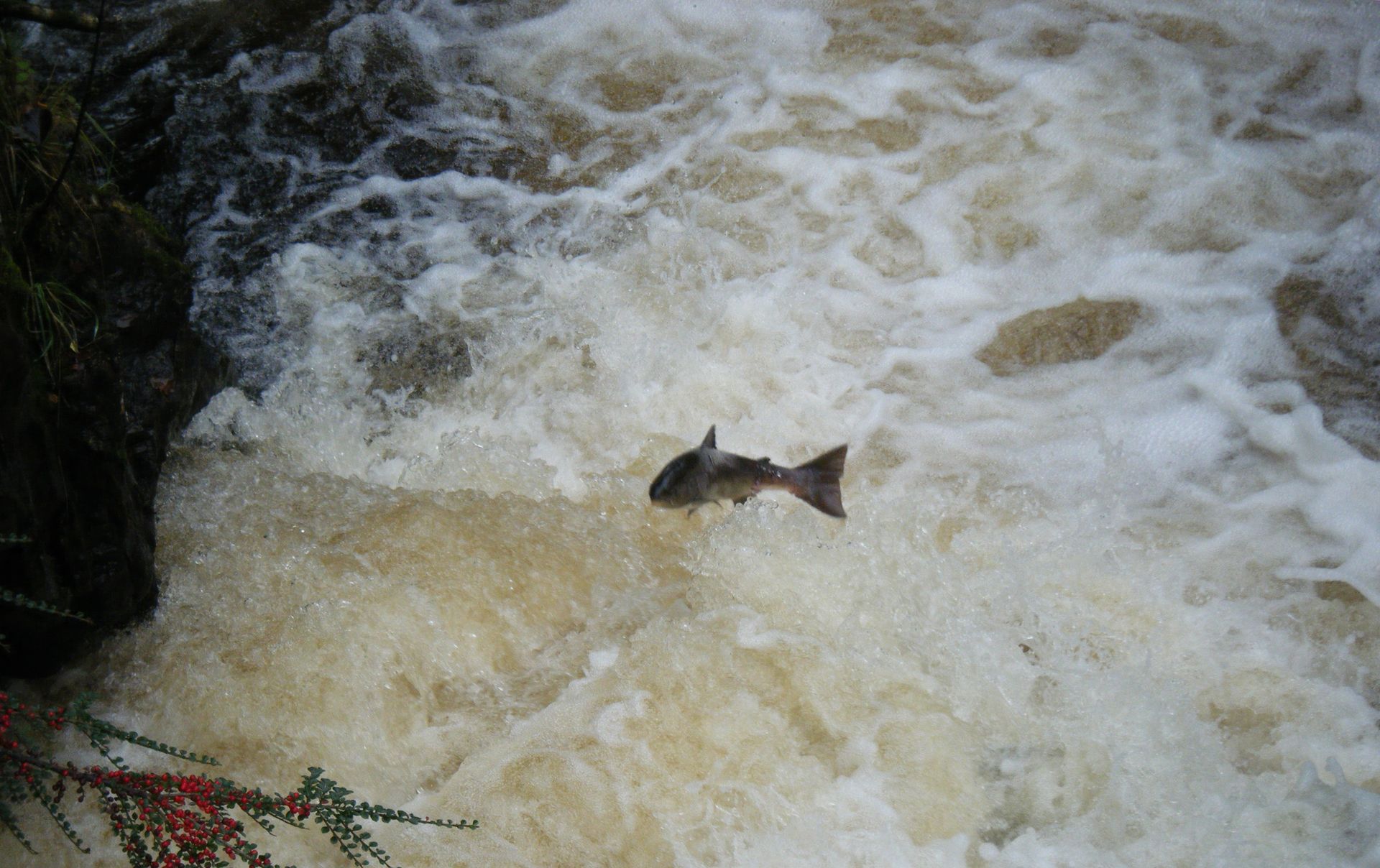
Conclusion
The Oughterard Hatchery stands as a testament to local conservation efforts, but its story is intertwined with a broader narrative of environmental struggle. The Owenriff River and Lough Corrib are critical ecosystems under severe pressure from agricultural and sewage pollution, as well as the detrimental impact of illegally introduced pike. The sources reveal a consistent pattern of inadequate action and conflicting policies from Irish State Agencies, often requiring legal intervention from the European Union to compel compliance with environmental protection mandates. The dire state of Ireland's water quality, as evidenced by declining fish stocks, the endangerment of species like the Freshwater Pearl Mussel, and even compromised drinking water, underscores an urgent need for robust implementation and enforcement of environmental laws. The author remains "optimistic that the laws already in place to protect our water bodies and native species will eventually do just that and stop the widespread pollution and spread of non-native flora and fauna," but this requires a significant shift in political will and administrative effectiveness.
©Conor MacGiolla Bhuí, September 2025.